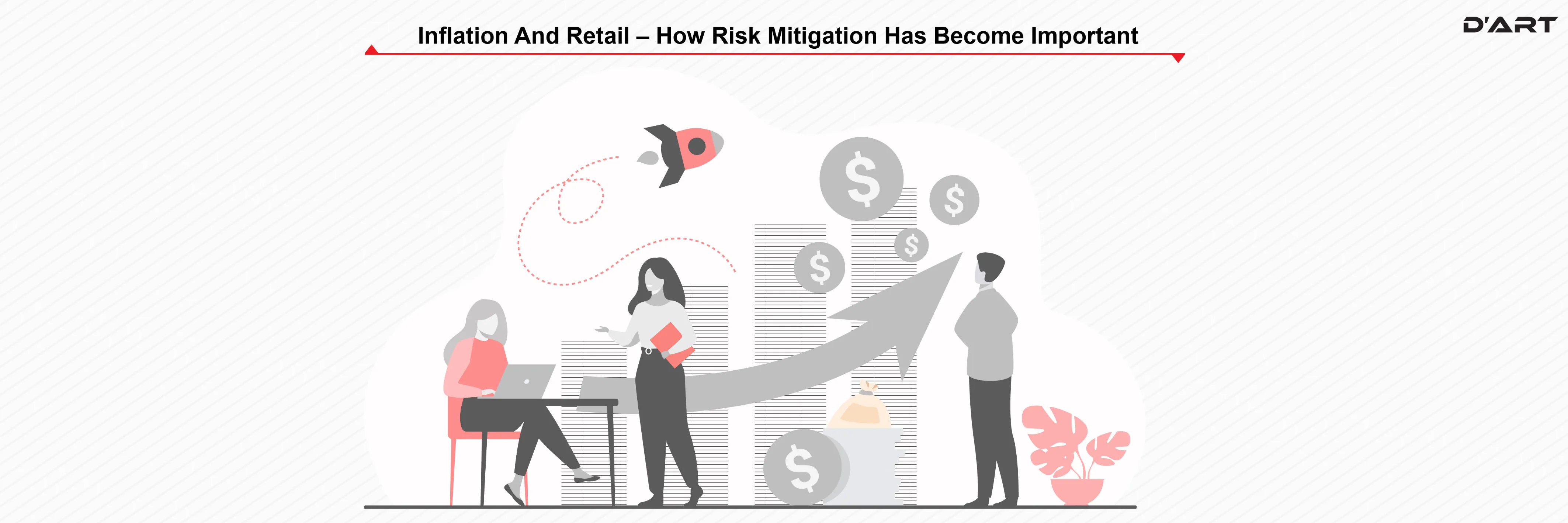INFLATION AND RETAIL – HOW RISK MITIGATION HAS BECOME IMPORTANT

When we discuss inflation, it is referred to as the change in the consumer price index, CPI, which measures the change in retail goods and services that households purchase for their daily consumption.
Inflation is expected, especially when the country undergoes high growth. The impact of inflation on retail can be seen through their pricing strategy, supply chain management strategies, etc. Brands tend to employ different strategies when faced with inflationary pressures.
However, if brands are not careful about they handle this transition. It could lead to disastrous consequences for the company's bottom line. But there are ways to ensure your business does not get caught in the crossfire. Learn how to prepare for long-term inflationary market consequences as well as how to avoid them. Below we share our insights:
STUDY FACTORS OTHER THAN PRICES
Consider other ways that inflation might affect the brand besides just prices. In addition, consider what kind of things might happen due to increased production costs.
Become as familiar and close as possible with the business so risk managers can tightly work together and consider the possibility of gaps in the availability, production, and optimization of systems and processes. These challenges can be tapped into as opportunities for retailers if they take bold, deliberate actions.
But that's only one side of the equation. Inflation can affect or straight-up change your customer base. The previous strategies might become obsolete as they no longer apply to your new customer base and might even create a divide between the customer's and brand's values.
So, the brand must observe how the landscape has changed whenever inflation hits. The fundamental of relevancy doesn't become obsolete. As old opportunities shut down, new ones rise with time, and with a good track record, a brand can retain its customer base and expand on it even when inflation is at its peak. And once you have established that not only do you understand your customer base but also have their back, you will not only survive but thrive as a brand.
REVISIT CONSUMER BEHAVIOUR
Business health during inflation often dictates that companies raise prices, especially public companies with fiduciary obligations. Because of inflation, consumers will likely be less loyal to brands and shift towards buying private-label goods as substitutes. Moreover, the rise in prices hurts consumers' attitudes and expenditures. Costlier production and transportation force businesses to cut their margins or pass those costs onto consumers.
As the price increases, demand for certain goods and services also reduces. Hence, think strategically. Set prices for specific items that will not affect the long-term value of your brand. Besides increasing profits, it will help the brand keep its reputation and customer-brand relationship intact.
It is relatively simple to lose a customer's trust in a brand, and there is no such thing as brand loyalty anymore. Therefore, when it comes to pricing, be honest about the reasons for price increases because people are accepting of brands that are open about their "whys."
KEEP A CLOSE EYE ON YOUR COMPETITION
Inflation keeps the competition fierce and makes it harder for retailers to maintain their competitive edge against other brands, for the brand to stay sharp, attentive, and ahead of its rivals when there is inflation in the economy. It has to stay ahead of the pack by providing products and services that are unique and valuable relative to its competition because inflation causes pricing to be the prime motivator.
The retail customer experience still matters with thoughtful touchpoints across mediums. But this is impossible because retailers can't always predict where the wind is going based on current demand trends. At the same time, price-sensitive customers change their preferences.
But money overall remains the primary concern that affects the sale or purchase of a product or service. The business sells it for cash, and customer buys it because they have money. But as there is a hike in the market, your product or service doesn't fall in the necessary category. Then it is tough not to go under. It is then time to choose.
A brand can either go against the market, reaching far and wide, or tackle its competition. The correct course of action is to serve the customer and look out for changes in strategies to either counter or take advantage of since the fluctuations in the market make things more vicious, not less.